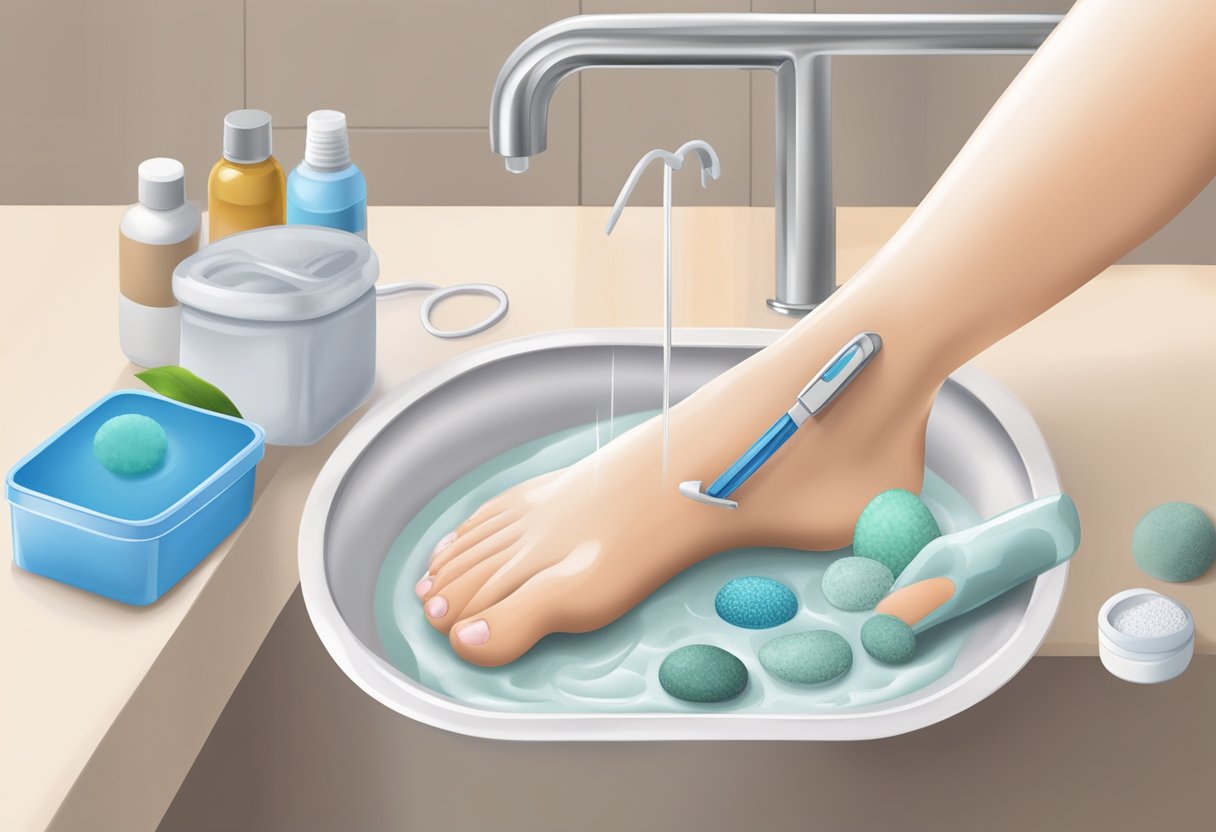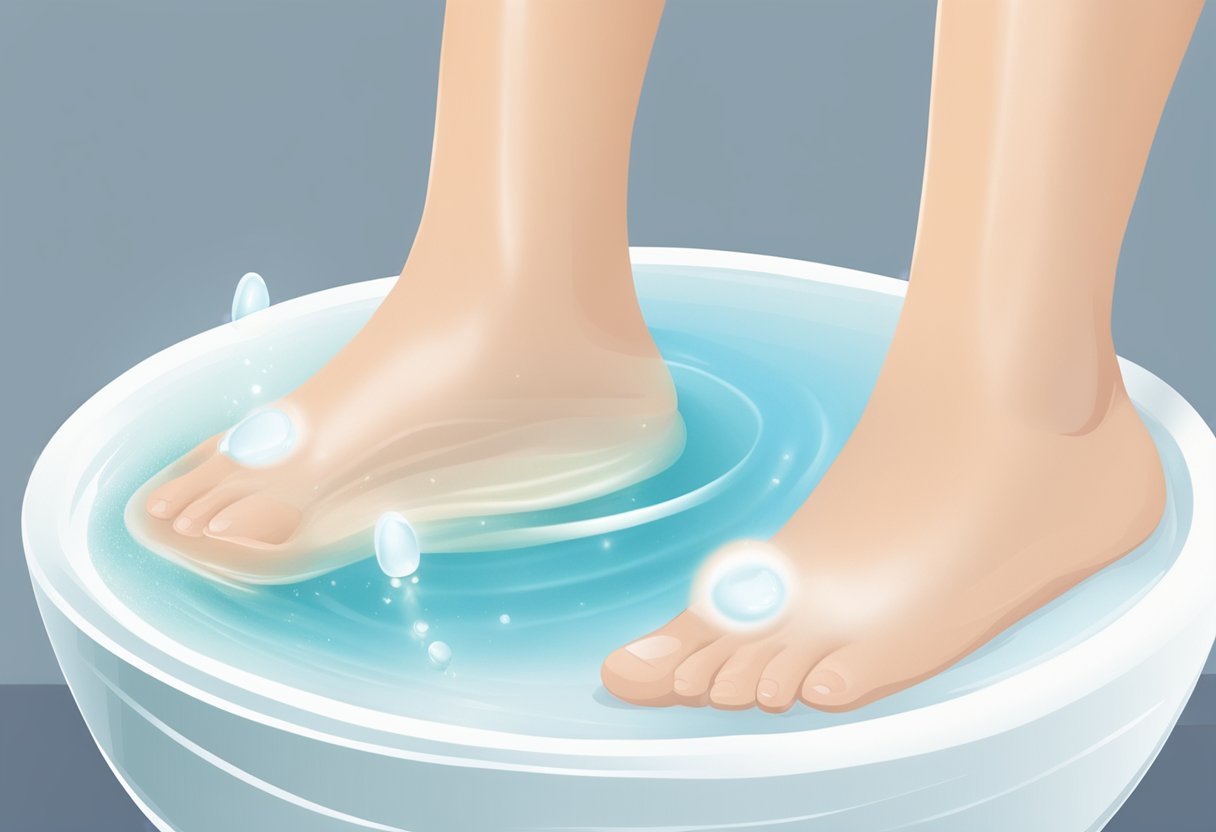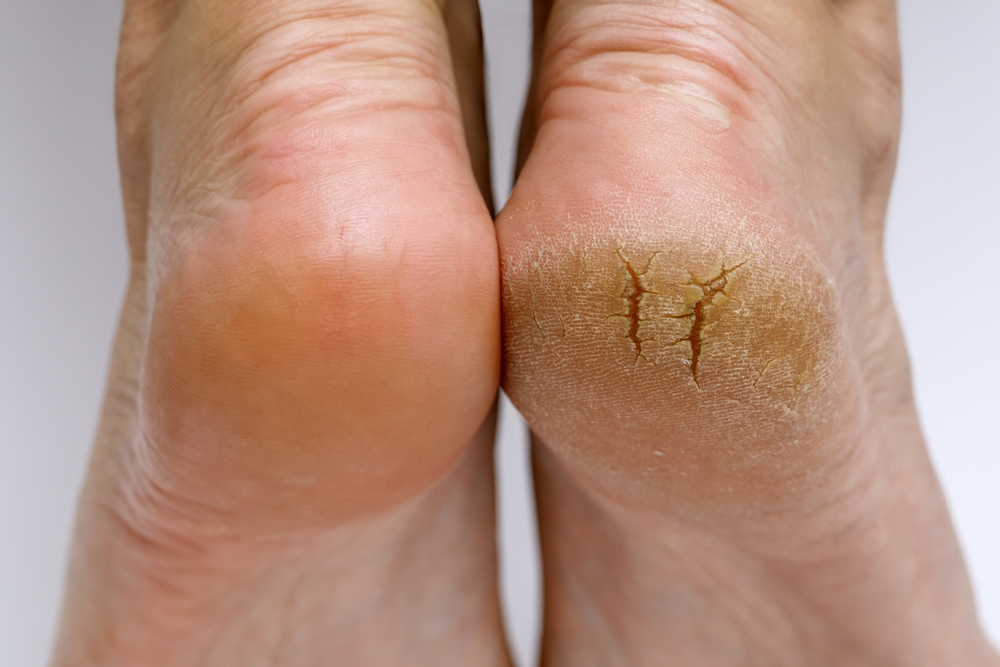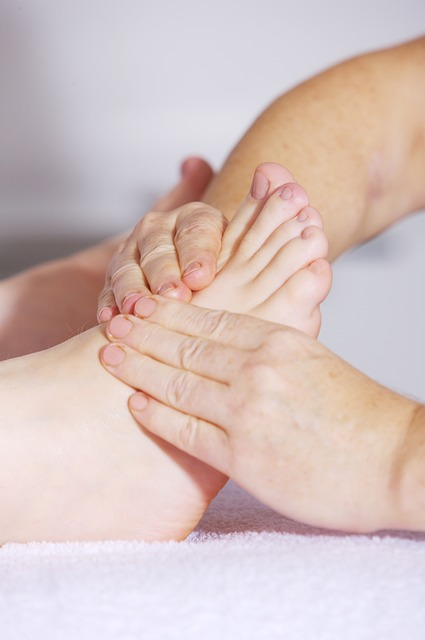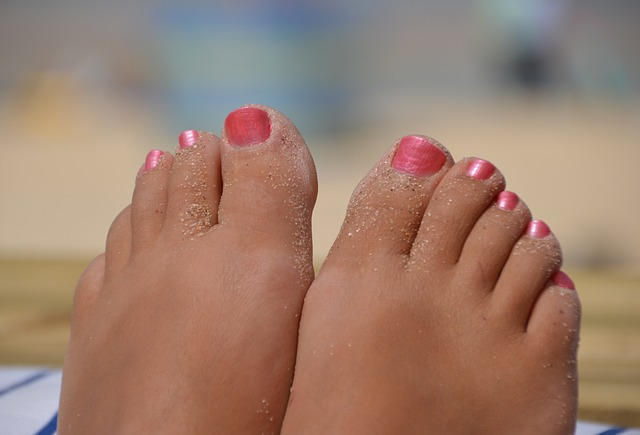
Best Foot Care Routine for Diabetics
Best Foot Care Routine for Diabetics: Prioritizing foot health is paramount in the journey of managing diabetes. Individuals with diabetes face increased risks of complications, making a meticulous foot care routine crucial.
This article unveils essential tips and practices to ensure optimal foot well-being, offering insights into daily care, suitable footwear choices, blood sugar management, and the importance of professional evaluations. Let’s embark on a proactive path to healthy diabetic feet. Read on to empower yourself with knowledge and practical advice.
Best Foot Care Routine for Diabetics: Essential Tips for Healthy Feet
Maintaining healthy feet is crucial for individuals with diabetes due to the higher risk of complications arising from infection, nerve damage, and poor blood circulation in the lower extremities. A meticulous foot care routine is essential to prevent injuries and manage the condition effectively. Diabetics are advised to monitor their foot health daily, maintain optimal blood sugar levels, and seek professional evaluations to ensure any problems are addressed promptly.

Optimal foot health in diabetes is achieved not only through careful daily maintenance but also by choosing suitable footwear to protect and support feet from injury. Good diabetic foot health practice involves lifestyle modifications that contribute to overall well-being, alongside being vigilant for signs that require medical intervention. These steps help prevent the escalation of common foot problems into more serious complications.
Key Takeaways
- Daily foot inspection and care are vital to prevent complications.
- Proper footwear and blood sugar management contribute to foot health.
- Regular check-ups and timely medical help are crucial for foot issues.

Understanding Diabetes and Foot Health
When you have diabetes, your foot health is critically important. Due to high blood sugar levels, the risk of foot complications increases significantly. This condition can lead to two main complications that impact your feet: neuropathy and peripheral vascular disease.
Neuropathy refers to nerve damage, which can cause a loss of feeling in your feet. Not being able to feel pain means that sores or injuries can go unnoticed and untreated, potentially leading to infections or ulcers.
Peripheral vascular disease affects the flow of blood to the limbs. For you, this means a reduced ability to heal wounds, increasing the risk of infections and possibly even amputations in severe cases.
To prevent issues, a daily foot care regimen is essential. Here are key practices:
- Inspect your feet daily for signs of cuts, blisters, or infections.
- Clean your feet with warm water and mild soap, avoiding extreme temperatures.
- Dry your feet thoroughly, especially between the toes.
- Moisturize your feet to avoid dry skin, but avoid moisturizing between the toes to reduce the risk of fungal infections.
These measures can be simple but are effective at maintaining foot health. By being proactive and attentive to the condition of your feet, you can help prevent some of the serious complications associated with diabetes.
For more detailed information, you can follow Diabetes and Your Feet.

Daily Foot Care Routine
Proper foot care is an essential part of managing diabetes. Keeping your feet healthy can help prevent serious complications.
Inspecting Your Feet
Each day, examine your feet for cuts, blisters, red spots, and swelling. Use a mirror to see the bottoms of your feet or ask for help if you need it. Catching problems early can prevent complications.
Washing and Drying
Clean your feet daily using warm (not hot) water; avoid soaking as it might lead to skin breakdown. Afterward, dry your feet thoroughly, especially between the toes, to prevent infection.
Moisturizing
To keep the skin from cracking or itching, apply a thin coat of a diabetes-specific or fragrance-free moisturizer on the tops and bottoms of your feet. Do not moisturize between the toes to avoid a fungal infection.
Trimming Nails Properly
Cut nails straight across and file the edges to avoid ingrown toenails. Do this regularly to keep your nails from growing too long and causing issues. If you have trouble reaching your feet, a podiatrist can assist with nail care.
Choosing the Right Footwear
Ensuring you have the correct footwear is a cornerstone of proper diabetic foot care. Your shoes and socks play a pivotal role in protecting your feet from complications.
Selecting Shoes
- Fit: Choose shoes that fit well. They should be snug but not tight, with enough room to wiggle your toes. Avoid shoes with pointed toes or high heels as they can cause unnecessary pressure.
- Material: Breathable materials, like leather or canvas, help to keep your feet dry and reduce the risk of fungal infections.
- Support: Good arch support is crucial. It helps distribute your weight evenly across your feet, which can prevent ulcers and blisters.
Remember to check the inside of each shoe before putting them on to ensure there are no foreign objects or rough seams that could harm your feet.
Picking Socks
- Fabric: Look for moisture-wicking socks to keep your feet dry. Avoid materials that don’t breathe well, like nylon.
- Seams: Seamless or flat-seam socks are best as they minimize friction and irritation.
- Fit: Socks should be snug but not restrictive. Excessively tight socks can impede circulation, which you definitely want to avoid.
Always select socks without tight elastic bands at the top, as these can also hinder blood flow to your feet.
Managing Blood Sugar Levels
Proper management of your blood sugar levels is crucial in diabetic foot care. Consistently high levels can lead to nerve damage and affect blood circulation, increasing the risk of foot complications.
Monitor Your Blood Sugar Regularly Your healthcare team may recommend the optimal frequency of checks. Typically, A1C levels should be below 7%, but your doctor could advise a different target based on your individual needs.
Adhere to Your Medication Schedule Take your insulin and other diabetes medications exactly as prescribed. They play a vital role in keeping your blood sugar within the desired range.
Dietary Modifications Emphasize a balanced diet rich in fruits, vegetables, whole grains, lean proteins, and healthy fats. Portion control and consistent meal timing help maintain stable blood glucose levels.
- Breakfast: Whole grain cereal, low-fat milk, and a piece of fruit.
- Lunch: Grilled chicken salad with mixed greens, dressing on the side.
- Dinner: Baked salmon, steamed broccoli, and quinoa.

Physical Activity Regular physical activity helps improve insulin sensitivity, which can help control your blood sugar levels. Aim for at least 30 minutes of moderate exercise most days of the week.
Stress Management Stress can affect blood sugar levels, so find ways to manage your stress through activities such as yoga, meditation, or deep breathing exercises.
By keeping your blood sugar levels in check, you’re taking a significant step toward preventing diabetic foot complications. Always consult with your healthcare provider for personalized advice and adjustments to your management plan.
Regular Professional Foot Examinations
As a diabetic, your feet require special attention, and regular professional foot examinations are a key component of your overall diabetes management plan. Receiving a comprehensive foot check at least once a year is recommended to prevent complications such as ulcers, infections, and potential amputations.
During these examinations, your healthcare provider should perform the following:
- Visual Inspection: Searching for skin changes, sores, blisters, and fungal infections.
- Sensory Assessment: Testing for loss of sensation using tools like the 10-g monofilament.
- Peripheral Pulses: Checking your foot circulation and assessing for peripheral artery disease.
- Reflex Testing: Evaluating the reflexes of your feet and ankles.
- Structural Examination: Identifying any deformities or alignment issues.
| Element | Method |
|---|---|
| Visual Inspection | Look for skin abnormalities and changes. |
| Sensory Assessment | 10-g monofilament test for sensation. |
| Peripheral Pulses | Palpate foot pulses to assess circulation. |
| Reflex Testing | Check ankle reflexes for neuropathy signs. |
| Structural Exam | Inspect foot structure for abnormalities. |
Importance of regular foot screening: Early detection of issues through an annual diabetic foot exam can reduce the risk of more severe problems later on, as nerve damage and poor circulation complicate the healing process.
Remember to follow up with your healthcare provider if you notice any changes or problems between your scheduled examinations. Taking these steps increases your chances of maintaining healthy feet and preventing serious diabetes-related foot complications.
Handling Common Foot Problems
As a diabetic, addressing foot issues promptly can be pivotal to your health. Here’s how you can handle some of the most common foot problems effectively.
Dealing with Dry Skin and Calluses
It’s important to keep your skin moisturized to prevent cracks that can lead to infections. Use lotion daily, but avoid applying it between your toes where excess moisture can promote fungal growth. For calluses, it’s recommended to gently use a pumice stone on wet skin. However, if the calluses are thick or turning yellow, consult your healthcare provider as this may be a sign of an internal issue.
Treating Cuts and Scrapes
Clean minor cuts and scrapes with mild soap and lukewarm water, then cover with a sterile bandage, changing it daily to monitor healing. If you notice any signs of possible infection, such as redness, warmth, or oozing, seek medical advice as soon as possible. Minor issues can escalate quickly for individuals with diabetes, so early treatment is key for prevention.
Preventing Infections
Consistent foot checks are a crucial part of preventing infections. Trim your nails straight across to avoid ingrown toenails. If you encounter any foot injuries or open wounds, it’s essential to see your doctor if they do not begin to heal after a few days. Always wear well-fitting footwear to protect your feet from external injuries.
Lifestyle Modifications for Better Foot Health
Managing your diabetes requires attention to your overall lifestyle, especially when it comes to maintaining foot health. Through targeted changes to your daily habits, you can significantly reduce the risk of foot-related complications.
Exercise and Foot Health
Regular physical activity is crucial for enhancing blood circulation to your feet, which is often compromised in diabetes. Aim to engage in low-impact exercises like swimming, bicycling, or walking for at least 30 minutes most days. Remember to wear appropriate footwear that fits well and provides support to minimize the risk of blisters and calluses.
Smoking Cessation
If you smoke, quitting is one of the most beneficial steps you can take for your foot health. Smoking can impair circulation, making it harder for your feet to heal and increasing the risk of infections. Consult your healthcare provider for resources and strategies to aid in smoking cessation.
Dietary Considerations
A balanced diet plays a key role in controlling blood sugar levels and supporting overall foot health. Incorporate a variety of nutrients by eating:
- Whole grains: for fiber and sustained energy.
- Lean proteins: to support tissue repair.
- Healthy fats: like those found in avocados and olive oil, which can help fight inflammation.
- Vegetables and fruits to provide vitamins and minerals crucial for healing and prevention of skin breakdown.
Stay hydrated as well, and consider consulting a dietitian for a meal plan tailored to your needs, including managing your weight to reduce the pressure on your feet.
When to Seek Medical Help

Prompt attention to foot problems can significantly reduce the risk of complications for individuals with diabetes. It’s essential to recognize the signs that require medical assistance.
Signs of Foot Infections
If you notice persistent soreness, warmth, redness, or swelling on any part of your foot or toe, it may indicate an infection. Blisters, open sores, or areas oozing pus are signs that need immediate attention from a healthcare provider. Review the guidelines for foot care for people with diabetes to understand preventative measures.
Changes in Foot Shape or Color
Any alterations in the shape of your feet, such as the development of hammertoes or bunions, warrant a consultation. Similarly, change in color, particularly darkening (suggestive of necrosis) or an unusual pallor, should prompt a visit to a healthcare professional. Stay vigilant and monitor for changes to maintain foot health.
Loss of Sensation
A reduction or complete loss of sensation in your feet, often described as numbness or tingling, is a sign of peripheral neuropathy. Don’t ignore these sensations; they can lead to injuries that you may not feel, and therefore, not treat promptly. Early detection and management are key, as explained in the Mayo Clinic’s discussion on diabetic foot care.
Prioritize Your Diabetic Foot Health
In conclusion, a proactive foot care routine is crucial for managing diabetes and preventing complications. Regular inspections, proper hygiene, suitable footwear, and blood sugar management are essential practices. Don’t forget the significance of professional examinations for early issue detection.

Take the Next Step: Act Now for Healthy Feet
Commit to your foot health today. Schedule regular check-ups, share your commitment with your healthcare provider, and make the necessary lifestyle changes. Your feet deserve the best care – start your journey to healthier, happier days now.
Frequently Asked Questions
Proper foot care is essential for individuals with diabetes to prevent serious complications. Each of these FAQs addresses a crucial aspect of diabetic foot care, focusing on routine practices and suitable products for maintaining foot health.
What are the initial steps in a foot care routine for individuals with diabetes?
You should begin with a daily inspection of your feet for cuts, blisters, redness, or swelling. Washing your feet in lukewarm water and drying them thoroughly, especially between the toes, is also critical. It is advised that individuals with diabetes follow guidelines for daily foot care.
Which specialized foot care products are recommended for diabetic patients?
It is recommended to use moisturizers for dry skin while avoiding application between the toes, and antifungal powders or creams if you’re prone to athlete’s foot. Using orthopedic shoes or cushioned insoles designed specifically for diabetics can provide additional support and reduce the risk of foot injuries.
What are the critical do's and don'ts for diabetic foot care?
You should keep your feet clean and moisturized, trim nails carefully, and never walk barefoot. Don’t use over-the-counter medications for corns or warts without consulting your doctor, and avoid tight or high-heeled shoes as they can exacerbate foot pressure.
How can diabetics prevent foot complications through daily care practices?
To prevent complications, check your feet every day and manage your blood sugar levels actively. Ensure that you do not ignore any foot injuries and consult your doctor immediately for any concerns. Regular visits to a podiatrist can help identify issues early on. Adhering to healthy foot practices is essential for prevention.
Are there specific types of socks that diabetics should wear for optimal foot health?
Diabetics should opt for socks without seams that can rub and cause blisters or sores. Moisture-wicking fabric helps keep feet dry. Some socks for diabetics are designed with extra cushioning and are made from materials that reduce the risk of fungal infection.
What professional foot care services should individuals with diabetes consider incorporating into their care routine?
Having a podiatrist as part of your healthcare team is highly beneficial. They can provide regular examinations, nail care, and treatment for any conditions that arise. Additionally, seeking professional help for callus removal and choosing custom orthotics if indicated can be advantageous. Accessing specialty services, such as those from a certified diabetes care provider, is essential to maintaining foot health.
Discover Feet Relief Today!
Tired of foot troubles? Visit our website for practical tips on maintaining healthy feet and insightful product reviews. Take a step towards comfort and well-being. Your feet deserve the best care – explore our resources now at www.feet-relief.com. Relief is just a click away!



